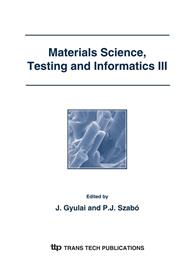p.255
p.263
p.269
p.277
p.285
p.291
p.297
p.303
p.307
AFM Investigation of Steels Surfaces Worn in HFRR Tests
Abstract:
Radical reduction of sulphur content in diesel fuel from the mid 90’s had disastrous impact on diesel fuel’s lubricity. Due to the desulphurization process the lubricity of diesel fuel dropped significantly and got crucial nowadays. The lubricity performance of the diesel fuel is evaluated by the HFRR test in Europe. The HFRR value is determined by measuring the equivalent wear scar diameter occurred on the steel ball specimen during the test. The topographies of these wear scars were investigated by AFM and correlation between the morphology of the worn surfaces and the different HFRR values has been found.
Info:
Periodical:
Pages:
285-290
Citation:
Online since:
February 2007
Authors:
Keywords:
Price:
Сopyright:
© 2007 Trans Tech Publications Ltd. All Rights Reserved
Share:
Citation:


